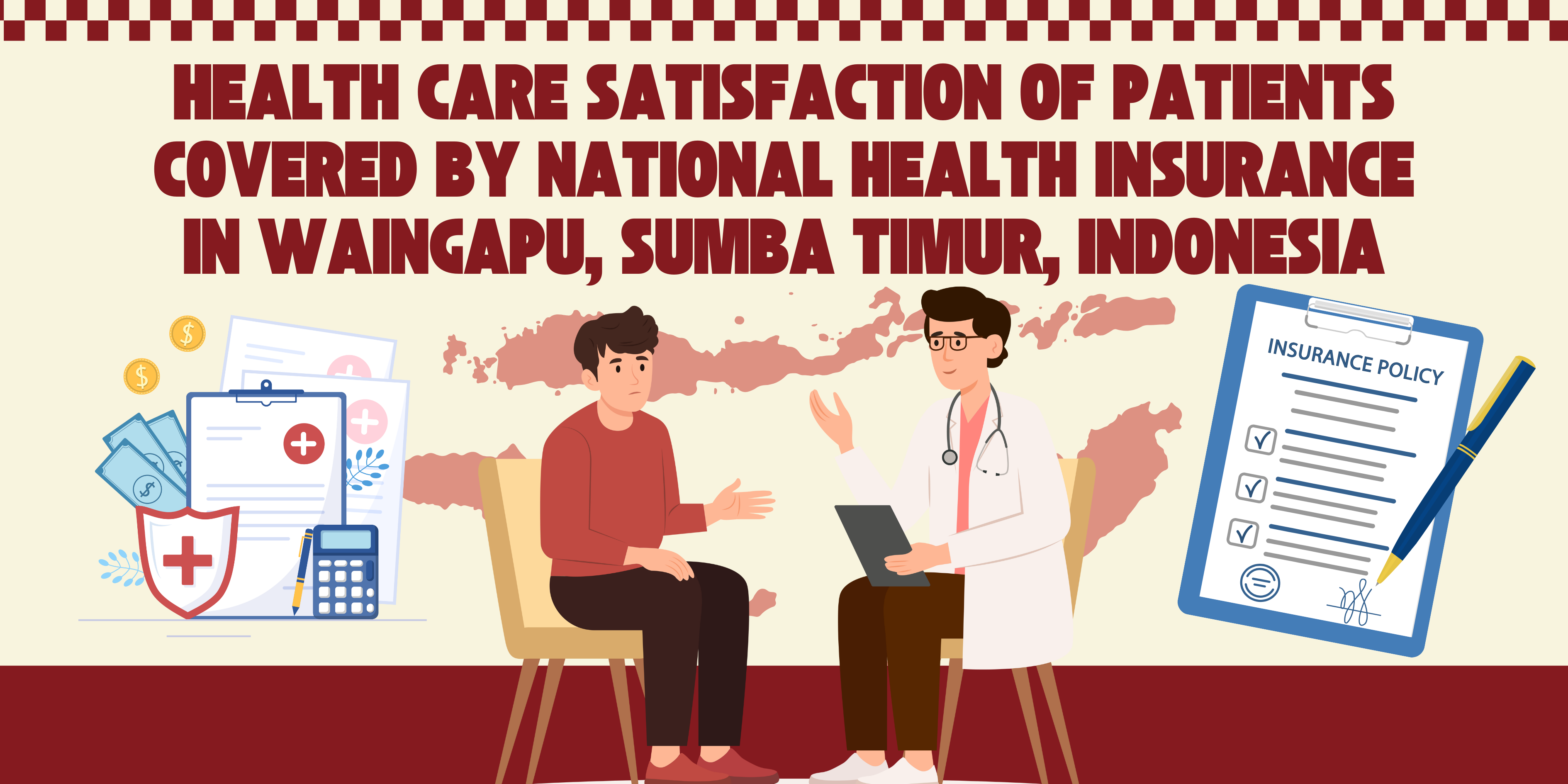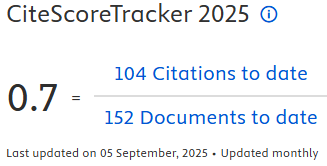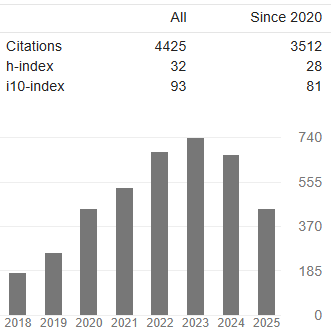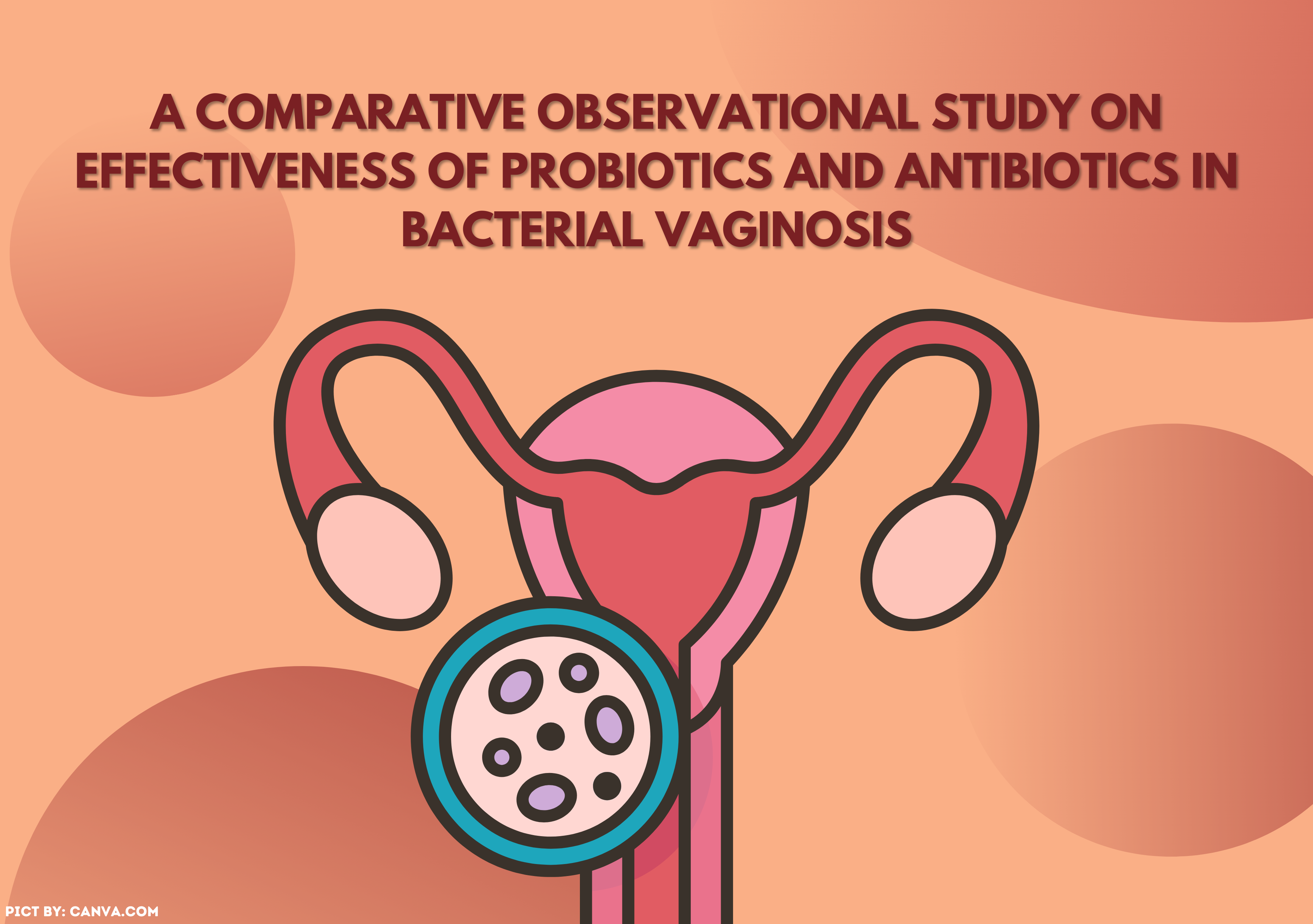HEALTH CARE SATISFACTION OF PATIENTS COVERED BY NATIONAL HEALTH INSURANCE IN WAINGAPU, SUMBA TIMUR, INDONESIA

Downloads
Introduction: Membership in Indonesia's National Health Insurance (NHI) has dramatically increased, especially among the subsidized poor group, reaching 83.9% of the 229.9 million people enrolled in the scheme. However, patients’ satisfaction with care provided under this coverage remains uncertain. Aims: To measure the health care satisfaction of patients covered by the NHI in Waingapu, Sumba Timur District, East Nusa Tenggara Province, Indonesia. Method: An explanatory cross-sectional study was conducted with 500 patients recruited from three hospitals and 10 community health centers. The Patient-Perceived Indicators of Satisfaction (PPIS) tool was developed for data collection. Descriptive statistical analysis was used to evaluate satisfaction level, while confirmatory factor analysis (CFA) tested the strength of association between indicators and patient satisfaction. Results: Most patients were very satisfied with the health care received; reliability (62%), assurance (52.2%), empathy (56.4%), tangible (49.6%), and responsiveness (45.4%). The CFA confirmed key indicators, including the availability of medicines as central to reliability (0.771), effective medicine (0.788), availability of parking area (0.814) for tangibles, motivation provided by health staff (0.804) for empathy, and responsiveness of pharmaceutical services (0.782). Among all dimensions, patients reported the highest satisfaction in assurance of health care (0.950), while satisfaction on tangible aspects (0.874) received the lowest rating. Conclusion: The study concludes that patients covered by the NHI are satisfied with the expected quality of health care services. However, satisfaction levels vary across individual indicators and dimensions.
Af, Abera et al. 2020. “Satisfaction with Primary Health Care Services between Insured and Non- Insured Patients under Community-Based Health Insurance Scheme : A Comparative Cross-Sectional Facility Based Study in North East Ethiopia Study Setting.” Family Medicine and Medical Science Research 9(1): 1–11.
Al-Harajin, Rasmah S., Sara A. Al-Subaie, and Ahmed G. Elzubair. 2019. “The Association between Waiting Time and Patient Satisfaction in Outpatient Clinics: Findings from a Tertiary Care Hospital in Saudi Arabia.” Journal of Family and Community Medicine 26(1): 17–22. https://doi.org/10.4103/jfcm.JFCM_14_18
Amro, Nawaf et al. 2018. “Factors Affect Patients Satisfaction in Emergency Departments in Palestine.” Journal of Health, Medicine and Nursing 54(1): 3–8.
Asnawi, Assila Anis et al. 2019. “The Influence of Hospital Image and Service Quality on Patients’ Satisfaction and Loyalty.” Management Science Letters: 911–20. https://doi.org/10.5267/j.msl.2019.2.011
Babatola, Oyebola Helen, Rabiu O. Popoola, Matthew Idowu Olatubi, and Folasade Rukayat Adewoyin. 2022. “Patients’ Satisfaction with Health Care Services in Selected Secondary Health Care Facilities in Ondo State, Nigeria.” Journal of Family Medicine and Disease Prevention 8(1): 1–9. https://doi.org/10.23937/2469-5793/1510145
Berwick, Donald M. et al. 2018. Crossing the Global Quality Chasm: Improving Health Care Worldwide. The National Academies Press. https://doi.org/10.1001/jama.2018.13696
Budi Setyawan, Febri Endra et al. 2019. “Medical Staff Services Quality to Patients Satisfaction Based on SERVQUAL Dimensions.” International Journal of Public Health Science (IJPHS) 8(1): 51. https://doi.org/10.11591/ijphs.v8i1.17066
Burodo, M. S., S. Suleiman, and Garba Yusuf. 2021. “An Assessment of Queue Management and Patient Satisfaction of Some Selected Hospitals in North-Western Nigeria.” International Journal of Mathematics and Statistics Invention (IJMSI) 9(8): 14–24.
Chinintya, Dwi Putri, and Putranto Manalu. 2020. “Kepuasan Pasien BPJS Kesehatan Pada Pelayanan Kesehatan Di Klinik Haji Medan Mabar.” Jurnal Kesehatan Global 3(1): 1. https://doi.org/10.33085/jkg.v3i1.4527
Dash, Ajitabh. 2021. “Assessment of Patient Satisfaction with Generic Medication in Emerging Economy Using the Treatment Satisfaction Questionnaire for Medication.” Journal of Patient Experience 8: 1–6. https://doi.org/10.1177/23743735211060791.
Demak, Indah Puspasari Kiay, Diah Mutiarasari, and Elli Yane Bangkele. 2019. “Does the Payment Method Affect Patient Satisfaction? An Analytical Study in 10 Hospitals in Central Sulawesi.” Global Journal of Health Science 11(5): 123. https://doi.org/10.5539/gjhs.v11n5p123
El-Haddad, Carlos, Iman Hegazi, and Wendy Hu. 2020. “Understanding Patient Expectations of Health Care: A Qualitative Study.” Journal of Patient Experience 7(6): 1724–31. https://doi.org/10.1177/2374373520921692
Endeshaw, Berhanu. 2021. “Healthcare Service Quality-Measurement Models: A Review.” Journal of Health Research 35(2): 106–17. https://doi.org/10.1108/JHR-07-2019-0152
Eriksson-Liebon, S. Roos, and I. Hellström. 2021. “Patients Expectations and Experiences of Being Involved in Their.Pdf.” Journal of Clinical Nursing 30: 1942–1952. https://doi.org/10.1111/jocn.15746
Freudenreich, Oliver. 2020. Psychotic Disorders: A Practical Guide (Current Clinical Psychiatry). 2nd ed. ed. Jerrold F. Rosenbaum. Boston: Springer. https://doi.org/10.1007/978-3-030-29450-2
Handari, Checilia, Erna Setyorini, and Stie Amkop. 2021. “Increased Patient Satisfaction and Loyalty in Terms of Facility Aspects and Health Worker Performance.” In The 11th Annual International Conference on Industrial Engineering and Operations Management Singapore, eds. Ahad Ali et al. Singapore: IEOM Society, 6314–21. https://doi.org/10.46254/AN11.20211063
Hosseini, Fatemeh, Negin Masoudi Alavi, Eesa Mohammadi, and Zohreh Sadat. 2021. “Scoping Review on the Concept of Patient Motivation and Practical Tools to Assess It.” Iranian Journal of Nursing and Midwifery Research 26(1): 1–10. https://doi.org/10.4103/ijnmr.IJNMR_15_20
Jamalabadi, Sara, Vera Winter, and Jonas Schreyögg. 2020. “A Systematic Review of the Association Between Hospital Cost/Price and the Quality of Care.” Applied Health Economics and Health Policy 18(5): 625–39. https://doi.org/10.1007/s40258-020-00577-6
Kasonde, Lombe et al. 2019. “Evaluating Medicine Prices, Availability and Affordability in Bangladesh Using World Health Organisation and Health Action International Methodology.” BMC Health Services Research 19(1): 1–12. https://doi.org/10.1186/s12913-019-4221-z
Mahdi, M Ivan. 2022. “Peserta BPJS Kesehatan Capai 229,51 Juta Hingga November 2021.” DataIndonesia.
McIntyre, Daniel, and Clara K. Chow. 2020. “Waiting Time as an Indicator for Health Services Under Strain: A Narrative Review.” Inquiry (United States) 57. https://doi.org/10.1177/0046958020910305
Mohanty, Bibekananda et al. 2022. “Effect of Patients’ Attitude on Their Satisfaction and Switching Intention in Generic Medicine Industry: An Empirical Analysis in India.” Asia Pacific Journal of Health Management 17(2): 1–7.
https://doi.org/10.24083/apjhm.v17i2.1821
Moudatsou, Maria, Areti Stavropoulou, Anastas Philalithis, and Sofia Koukouli. 2020. “The Role of Empathy in Health and Social.” Healthcare 8(36): 7–9. https://doi.org/10.3390/healthcare8010026
Naveed, Rana Tahir, Ahmad Mohmad Albassami, Naveed Ahmad, and Mahsa Moshfegyan. 2019. “Patient Satisfaction through Modified SERVQUAL Model.” Pacific Business Review International 11(7): 96–106.
Ozawa, Sachiko, Raja Shankar, Christine Leopold, and Samuel Orubu. 2019. “Access to Medicines through Health Systems in Low-and Middle-Income Countries.” Health Policy and Planning 34: III1–3. https://doi.org/10.1093/heapol/czz119
Pratiwi, Agnes Bhakti et al. 2021. “Is Indonesia Achieving Universal Health Coverage? Secondary Analysis of National Data on Insurance Coverage, Health Spending and Service Availability.” BMJ Open 11(10). https://doi.org/10.1136/bmjopen-2021-050565
Sapitri, Poni, and Irda Sari. 2021. “Tingkat Kepuasan Pasien Peserta Bpjs Kesehatan Terhadap Mutu Pelayanan Kesehatan Di UPTD Puskesmas Rawat Inap Ciranjang.” Cerdika: Jurnal Ilmiah Indonesia 1(10): 1323–33. https://doi.org/10.36418/cerdika.v1i10.198
Shukar, Sundus et al. 2021. “Drug Shortage: Causes, Impact, and Mitigation Strategies.” Frontiers in Pharmacology 12(July): 1–18. https://doi.org/10.3389/fphar.2021.693426
Siahaan, Sahat Manampin, Lukman Hakim, and Tita Hariyanti. 2018. “The Effect of the Quality of Pharmaceutical Service on Outpatient Satisfaction of Amelia Hospital.” Jurnal Aplikasi Manajemen 16(1): 115–24. https://doi.org/10.21776/ub.jam.2018.016.01.14
Social Health Security Administration, Humas. 2021. “Kaleidoskop BPJS Kesehatan 2021: Menutup Tahun Dengan Kinerja Gemilang (BPJS Kesehatan Caleidoscope 2021: End Year with High Performance).” BPJS Kesehatan: 1.
Teguh Dartanto, Alin Halimatussadiah, Jahen Fachrul Rezki, Renny Nurhasana, Chairina Hanum Siregar et al. 2019. “Why Do Informal Sector Workers Not Pay the Premium Regularly? Evidence from the National Health Insurance System in Indonesia.” Applied Health Economics and Health Policy 18(September): 81–96. https://doi.org/10.1007/s40258-019-00518-y
Teshnizi, Saeed Hosseini et al. 2018. “Assessing Quality of Health Services with the SERVQUAL Model in Iran. A Systematic Review and Meta-Analysis.” International Journal for Quality in Health Care 30(2): 82–89. https://doi.org/10.1093/intqhc/mzx200
Upadhyai, Raghav, Arvind Kumar Jain, Hiranmoy Roy, and Vimal Pant. 2019. “A Review of Healthcare Service Quality Dimensions and Their Measurement.” Journal of Health Management 21(1): 102–27. https://doi.org/10.1177/0972063418822583
Wang, Zhonghua, Xiangjun Li, Mingsheng Chen, and Lei Si. 2018. “Social Health Insurance, Healthcare Utilization, and Costs in Middle-Aged and Elderly Community-Dwelling Adults in China.” International Journal for Equity in Health 17(1): 1–13. https://doi.org/10.1186/s12939-018-0733-0
WHO. 2019a. Model List of Essential Medicines, 21st List. Geneva.
WHO. 2019b. “Universal Health Coverage (UHC).” WHO.
WHO. 2020. “Free Health Care Policies.” World Health Organization: 1.
WHO. 2022. “Universal Health Coverage (UHC): Key Facts.” WHO.
Winda, Syahdu Winda. 2018. “Formularium Nasional (FORNAS) Dan e-Catalogue Obat Sebagai Upaya Pencegahan Korupsi Dalam Tata Kelola Obat Jaminan Kesehatan Nasional (JKN).” Integritas 4(2): 30. https://doi.org/10.32697/integritas.v4i2.328
Windi, Yohanes Kambaru. 2018. “An Emerging Health Protection System and Its Coverage of a Vulnerable and Marginalised Population: The Waste Pickers of Surabaya, Indonesia.” Monash University.
Windi, Yohanes Kambaru, Baiq Dewi Harnani, and Asnani Asnani. 2022. “Patient-Perceived Indicators as a Basis for Satisfaction Assessment of Healthcare.” International Journal of Public Health Science 11(2): 687–94. https://doi.org/10.11591/ijphs.v11i2.21375
Wiseman, Virginia et al. 2018. “An Evaluation of Health Systems Equity in Indonesia: Study Protocol.” International Journal for Equity in Health 17(1): 1–9. https://doi.org/10.1186/s12939-018-0822-0
Copyright (c) 2025 The Indonesian Journal of Public Health

This work is licensed under a Creative Commons Attribution-NonCommercial-ShareAlike 4.0 International License.
- The authors agree to transfer the transfer copyright of the article to The Indonesian Journal of Public Health effective if and when the paper is accepted for publication.
- Authors and other parties are bound to the Creative Commons Attribution-NonCommercial-ShareAlike 4.0 International License for the published articles, legal formal aspect of journal publication accessibility refers to Creative Commons Attribution-NonCommercial-ShareAlike 4.0 International License (CC BY-NC-SA), implies that:
- Attribution ” You must give appropriate credit, provide a link to the license, and indicate if changes were made. You may do so in any reasonable manner, but not in any way that suggests the licensor endorses you or your use.
- NonCommercial ” You may not use the material for commercial purposes.
- ShareAlike ” If you remix, transform, or build upon the material, you must distribute your contributions under the same license as the original.































